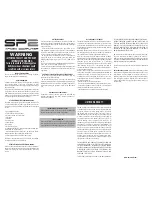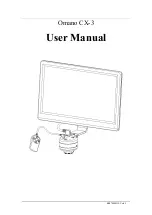
9
ARTISTIC REGISTRATION
Organ registrations fall into two broad categories: solo combinations and ensembles.
A solo combination is one in which a melody is played on one keyboard, the
accompaniment on another keyboard, and the pedal often provides a light bass line.
Almost any stop or combination of stops will sound good as a solo voice. A contrasting
tone quality should be chosen for the accompaniment, so that the accompaniment is
softer than the solo voice. The Pedal stops must provide a foundation for the sound
without covering it.
Most 8’ reed stops make interesting solo voices. The addition of a 4’ flute or a flute
mutation (e.g., Nasat or Terz) to a reed, such as the Trompette, colors the sound further
and increases its volume slightly. Adding an 8’ flute to a reed will add body to the
sound.
Flutes can be used alone or in combinations as solo voices. One special combination of
flutes that creates an appealing and historically significant solo combination is the Cornet
(pronounced kor-NAY). The Cornet is created by using the following Swell stops:
Gedackt 8’, Koppelflöte 4’, Nasat 2-2/3’, Blockflöte 2’, and Terz 1-3/5’. This solo
combination was used widely in Baroque organ music, but it is just as appropriate for
some modern music. Useful variations of the Cornet may be achieved by eliminating the
4’, the 2’, or both.
When choosing stops for a solo voice, it is not always necessary to include an 8’ stop; for
example, since the 4’ flute has a tone quality different from that of the 8’ flute, the 4’
flute can be used as an independent solo voice. By playing the solo an octave lower than
written, the notes will sound at the correct pitch. In similar fashion, a 16’ stop can be
selected and the notes played an octave higher than written. Tonal variety will be gained,
because each stop has its own tone color.
For accompaniment, the most desirable voices are the 8’ flutes or strings on each manual.
Celestes often make effective accompaniments. The correct choice depends on the
volume of the solo tone (a soft solo voice requires the softest accompanimental stop), the
element of contrast, and the location of the solo stop. A bright, harmonically rich solo
reed, for example, can be accompanied by either a string or flute, but the flute will often
contribute greater interest because of its greater contrast.
Try to seek a “natural” balance of volume between solo and accompaniment. This will
be especially easy to accomplish since the solo and accompaniment are under separate
expression.





































